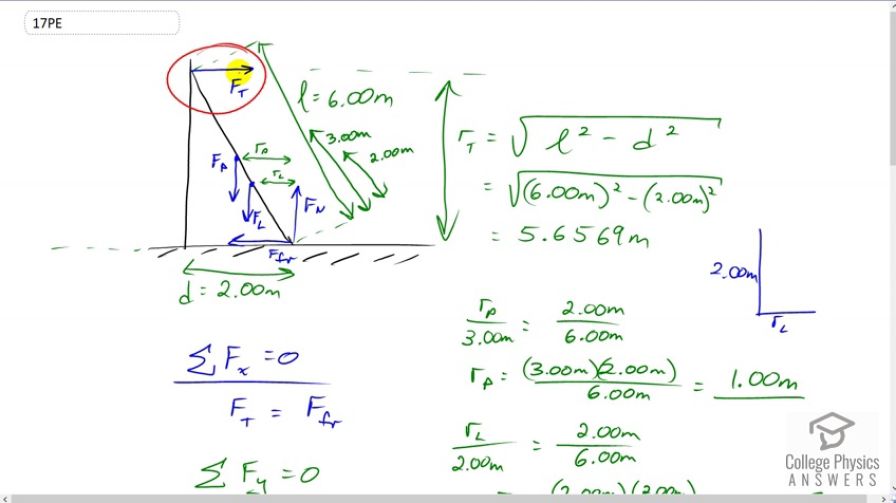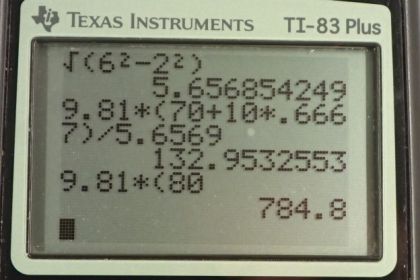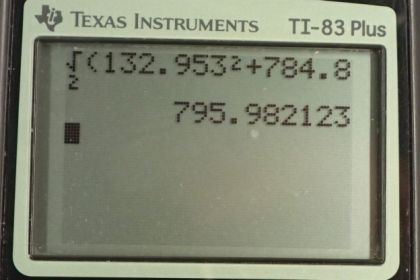Solution video
OpenStax College Physics, Chapter 9, Problem 17 (Problems & Exercises)

Calculator Screenshots
Comments
In the question, it gives us the center of mass as being 2m from the bottom, yet you never use the center of mass. Was that a misdirection in the question?
I was also curious, I thought that the torque being applied to the ladder has to be perpendicular to the ladder, the forces you show are at an angle.
I was thinking that the force of the top of the ladder would be directed to the left and down, the force of the person would be directed left and down and then the bottom of the ladder would have the normal force pointing to the right and up.
Just trying to wrap my head around this.. thanks for clarification :)
Hi ken,
Thanks for the good questions.
1) The 2m center of mass is important, and is mentioned beginning at 3:46 where I talk about the torque due to the force of gravity on the ladder. The force of gravity is imagined to act at the center of mass, so the leaver arm is the horizontal distance from the center of mass of the ladder to the pivot located at the bottom of the ladder. The horizontal distance is needed since that is the distance perpendicular to the force (gravity), which is straight down.
2) The forces can be any direction. What's important is to resolve either the force, or the lever arm, into mutually perpendicular components, and then multiply those components. In this solution I've been multiplying the force by the component of the lever arm perpendicular to the force.
3) I think what you have in mind is the force that the ladder applies on the wall. That would be to the left. However, we're interested only in forces on the ladder. The wall will apply a Newton's Third Law counterpart to the force on the wall due to the ladder (left, as you say) - this would be the force on the ladder due to the wall. That's to the right, of equal magnitude to the force on the wall due to the ladder. The question simplifies this force by saying the rain gutter is frictionless which means there is no component down or up. A frictionless surface can only exert a force perpendicular to the surface.
4) The force on the person is straight down since gravity is straight down.
5) The force on the bottom of the ladder is up and to the left. Claiming "to the right" I suspect is the same confusion as with the wall - it isn't the force on the ground we're interested in, but rather the force on the ladder. The component of this force directed straight up is named normal since that's the meaning of the word normal - it's perpendicular to the surface. It's not important to call it this - you could say the component perpendicular to the surface just the same. The component of this force to the left is due to friction with the ground. Friction is always directed along the surface.
Well, there's food for thought! :) I hope it helps,
Shaun
Will the angle of the direction of the force be the same angle as the angle between the ladder and the ground?
When you take the invTan(Fn/Ff), I know that will be the angle of the force. Is that also the angle of the ladder?
Thanks :)
Hi Ken,
Glad you're really picking this question apart. It's a good case study where if you understand this, you'll probably be able to answer any question. :)
The angle of the resultant force on the bottom of the ladder does not need to be the same as the angle of the ladder. At 6:06 I discuss this in the video. If you found the angle of the force at the bottom of the ladder it would be with respect to the ground, whereas the angle of the ladder is the inverse cosine of the distance from the wall to the ladder divided by the length of the ladder . They are not the same angles.
All the best,
Shaun



